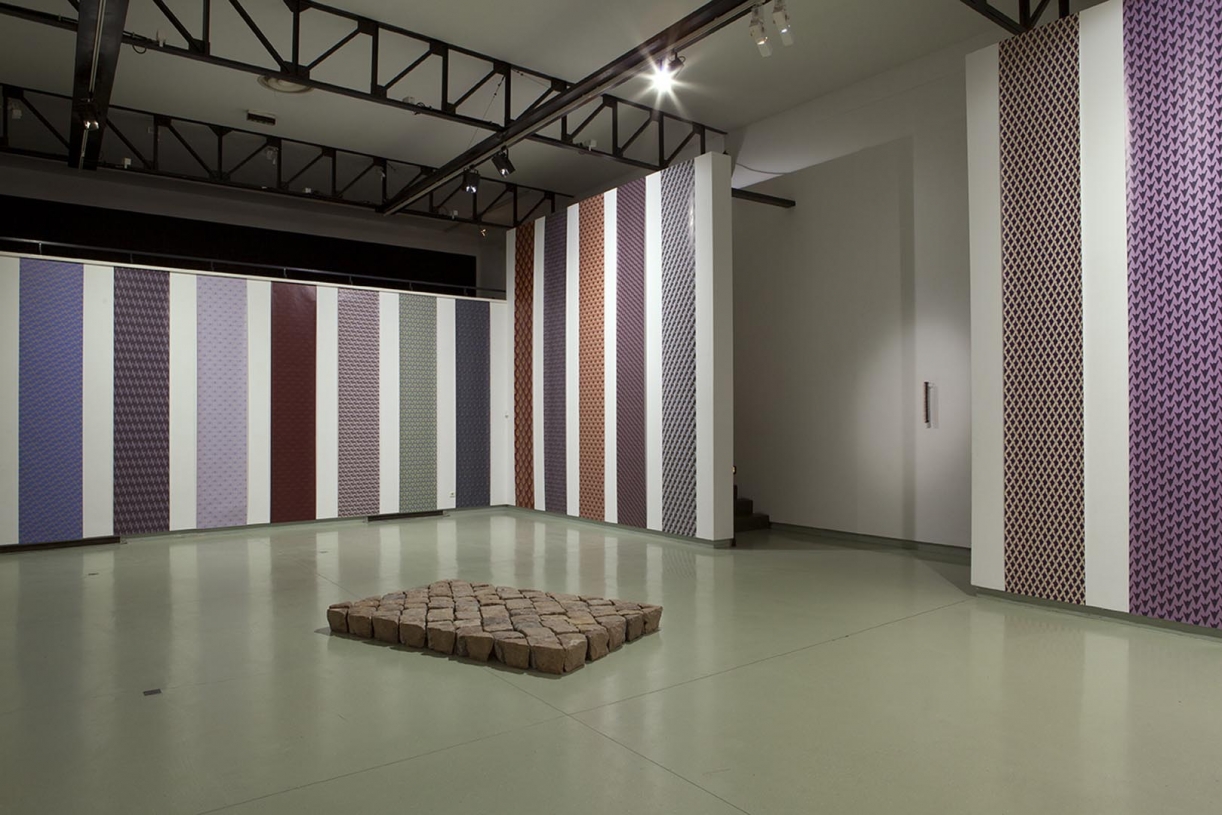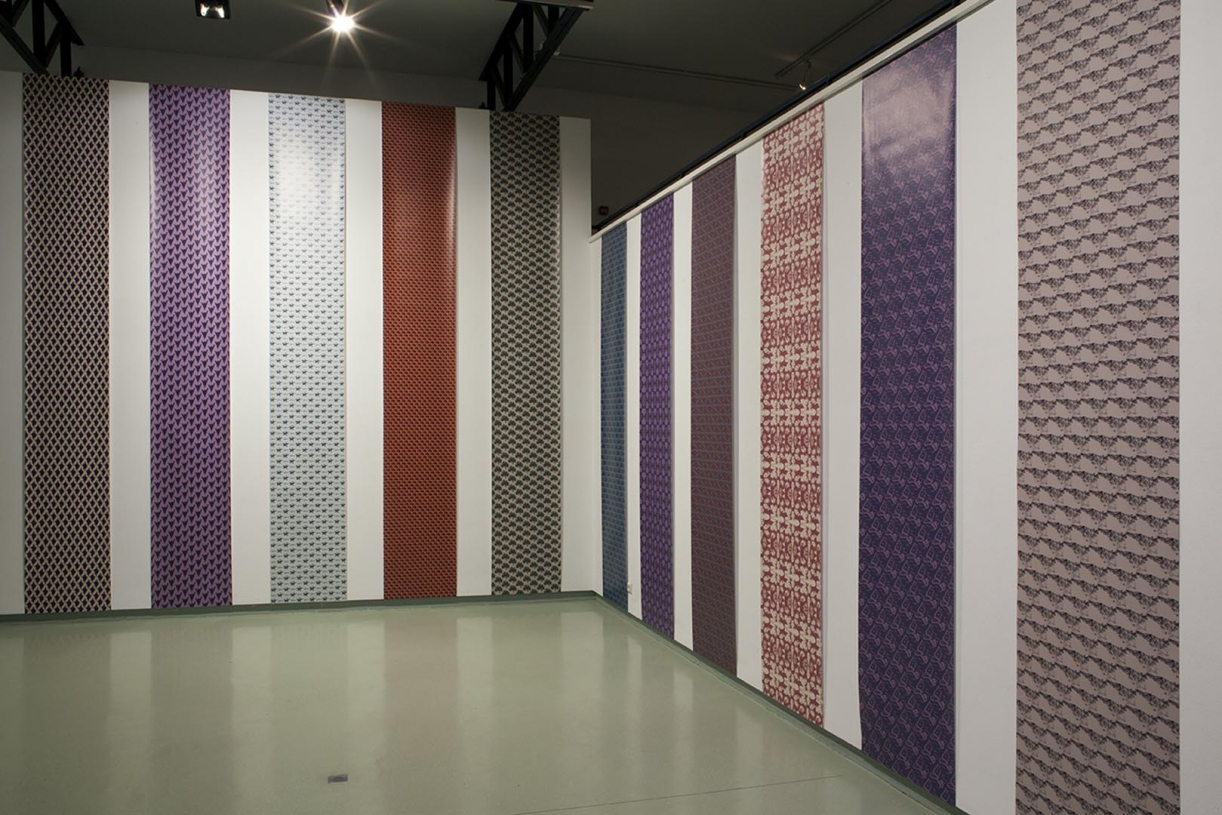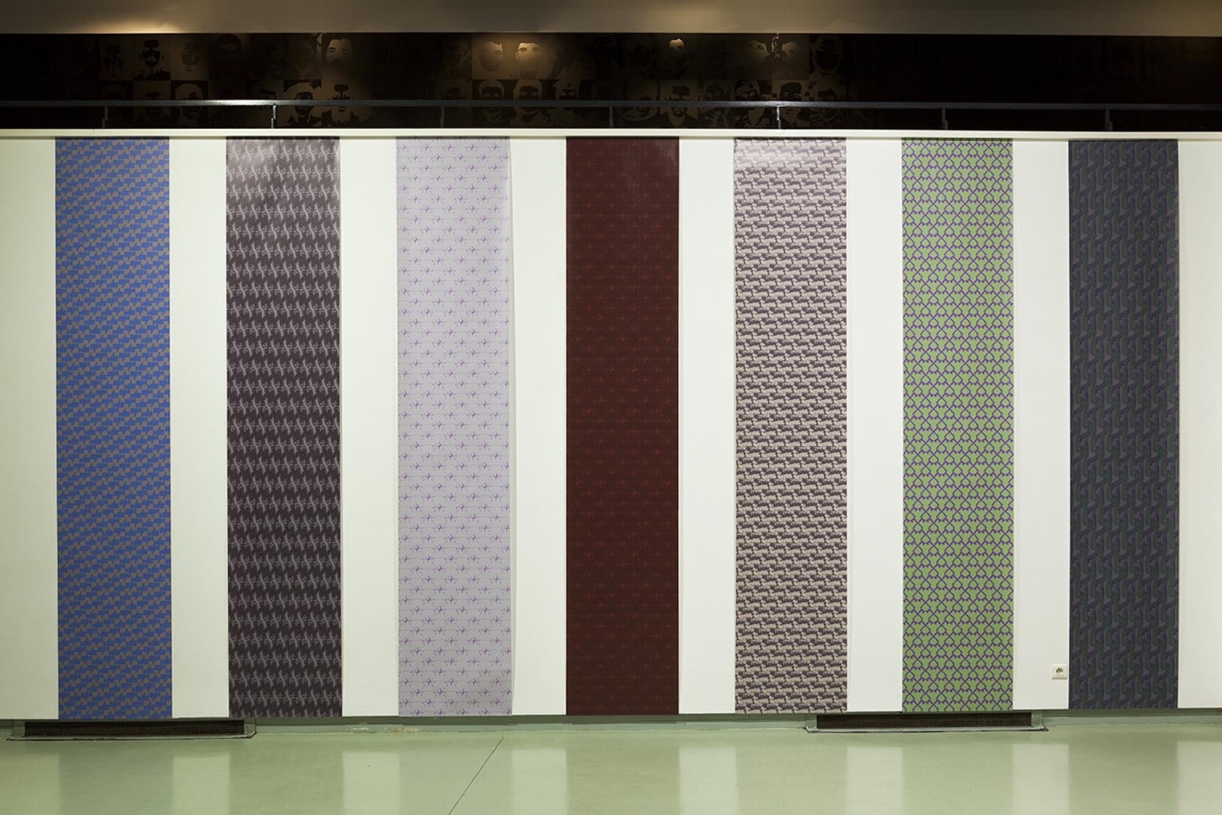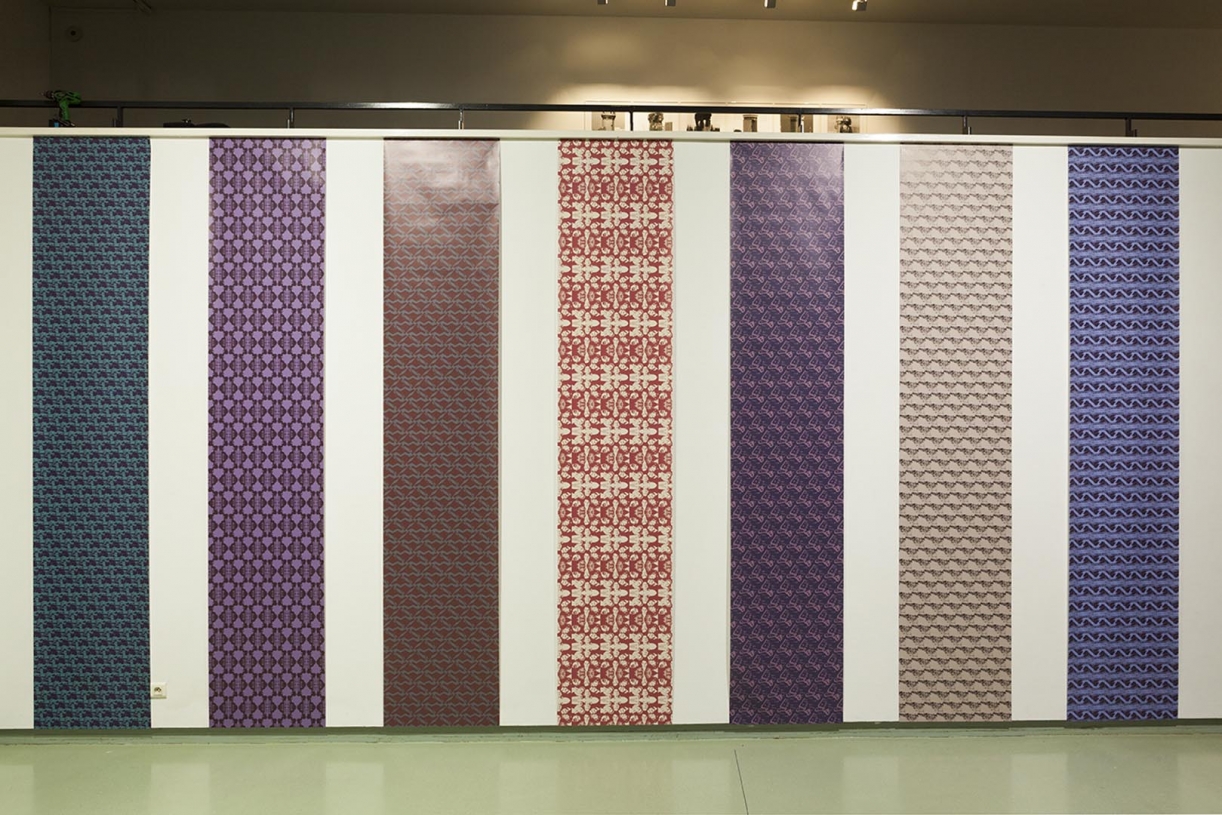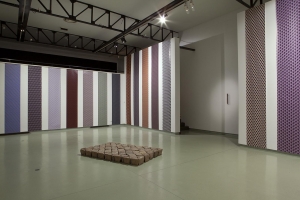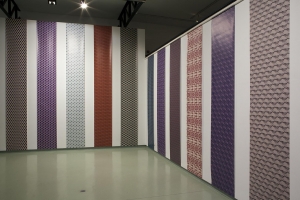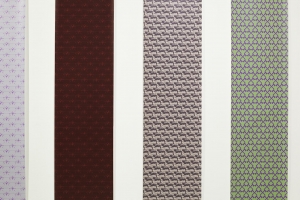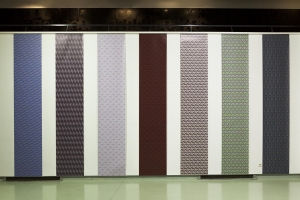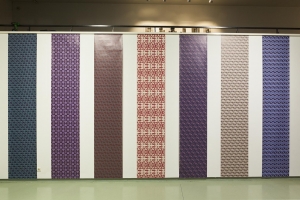Wallpaper, 2015
Wallpaper, 2015
Wallpaper, consists of collected images, screenshots from the internet in order to create a certain pattern and finally reproduce them in the form of Wallpaper. Images of current world events that are recognizable, images that carry in them the horror, may they be latent, suggested or present.
The bombings, the weapons, the scenes of arrests would become physically the setting of our daily life. The use of wallpaper would neutralize these images: it affirms both their omnipresence in our lives and the relative detached disinterest we have towards them as a consequence of their repetitive nature. The images of September 11, although embedded in our memories, do not move us anymore, for they have been assimilated, absorbed and digested. The horror is replaced with the historic event, written and disembodied. Through effects of reduction to essential forms, games of symmetry and inversely, the motifs would acquire an aesthetic quality and reveal their brutality only to the one who approaches them and gives them a conscientious look. The process of "awakening" or revelation to this information would therefore be the opposite of that experienced in front of our screens: ordinarily the shock would follow. The effect would be all the more obvious as it would be unexpected.
Wallpaper, 2015, Exhibition view, Diplopie, Espace d'Art Contemporain André Malraux, Colmar 2016
Interface, 2014
Interface, 2014
"By naming his series of images Interface, Taysir Batniji plays on the meaning of a word commonly used in the disciplines of geography and computing. Interface is also a reference to the place itself, Bahrain, translates literally to ’two seas’. Thus, the photo series appears as a documentation of shapes that are often the contact of two distinct spaces within the landscape.
For Batniji, sand and water, are recurring elements and become common vectors throughout his images for Interface. Together, land and sea symbolize the shore, the border and the threshold. The sand is a metaphor for the continuous state of metamorphosis that the landscape of Bahrain is experiencing. The artist perceives the country to be in a state of perpetual transformation, reclaiming land from the sea to expand its borders, where sand connotes a work-in-progress.
Interface produces, as its computing meaning suggests, a system of illusions – nearly virtual – of these model-like architectures, of their volumes, in a country that vacillates between reality and fiction while it metamorphoses.
The reference to Land art in these, minimalist and sometimes abstract, images is inevitable, where dunes that are also sometimes burial sites are witnesses of the passage of time and where human presence is never shown but suggested. Through his framing, Batniji makes apparent the vacuity and inertia, producing moments suspended in time that appear as the counterpoint to the mutation of the space.
In these landscapes where colours are often neutral, sometimes monochrome or composed of varying degrees of white, of pastels, fragments of chromatic colour sometimes suddenly appear. They contribute to the poetic and meditative language of Batniji, and through that of a hypnotic time, of a suspended world made of imprints, traces and outlines. The inter-spatiality of the series Interface is also inter-temporality."
Commissioned by the Ministry of Culture of Bahrain, end of 2013. Text by Alexandre Castant
